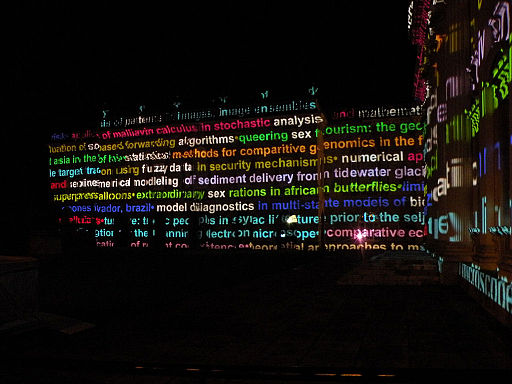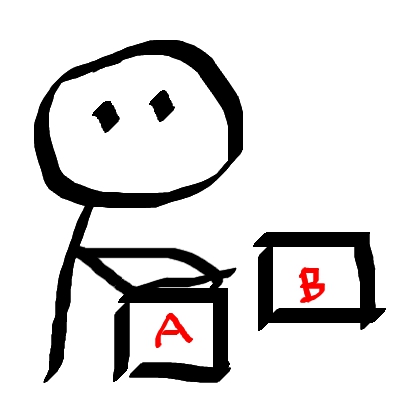Tag: webs of knowledge
Researching the Invisible

Research can present some interesting challenges – and many times those challenges become unanticipated opportunities…
Early into my phase I doctoral work, I slumped into a chair in my supervisor’s corner office overlooking Glasgow’s West End. I’d been exploring sports marketing campaigns and anticipating clearly identifiable stereotypes, or more specifically: racialized and gendered representations. When I “read” the material critically, these relationships were there. Yet, specific examples seemed difficult to pin down – as though some of what I’d remembered from previous views and initial readings of these advertising campaigns was never there in the first place. Even worse, it was difficult to tell if there were any campaigns related to women athletes at all.
My then-supervisor offered rare soothing and sage words: “…sometimes what’s not there is just as important—if not more so—than what IS there.” Although I knew that many materials and social relationships are erased from historical accounts, I had not considered exploring the process in relation to how marketing narratives obscure social relationships. More importantly though, I had not seen the opportunities to explore data “in the negative.”
Suddenly, I could see a much wider and more detailed field! In considering what was not there, decision-making and social hierarchies leaped off the pages and video over which I had been poring. Thinking critically and carefully about research data offers opportunities to assess explicit and implicit social patterns.
Recognizing the opportunities inherent in researching challenges: tracking the ghosts of social relationships
Yesterday, my boss demonstrated the ways SIA digitized collections offer insights into what I’d like to call “invisible social relationships”. For example, researchers—such as those whose notebooks are included in the Field Book project—may have detailed their scientific progress in identifying species and practices conducting research in the field in certain geographic regions. Yet, these field books might not specifically speak to daily or repeating patterns, such as social relationships established between the researchers and local and state political figures in these regions.
If one reads merely the available written text, that is, he or she risks obscuring part of the story; this narrative gap becomes clear, for example, once a corresponding set of data is included: such as images of events a scientist attended. In photographic evidence and media coverage of these events, invisible social relationships that relate to the research practices begin to emerge. These could be benefactors or benefitters from research, or cultural or political allies who are unaffiliated with the research interests of the researcher, or even conspicuous absences even in the photographic material that can tell us more about the invisible social relationships and exchanges. That is to say, the research itself may have had official and unofficial agenda, so the official agenda would be demonstrated in field book records, but secondary, unofficial agenda might be “in the negative” or only determined through several steps of inference. Current researchers might be able to better capture this information and analyze these relationships, if these researchers were able to stay aware and anticipate the opportunities they might come across while doing related subject matter research in archival data.
Invisible social relationships online
Researching in the digital space offers similar challenges with benefits. Within my current research into communication within a sports fandom online, relationships are built in virtual space but they are also obscured within this space. It can be difficult to track “correspondence” between users, especially as communications may be deleted or altered. Careful observation of posts and communication via notes and tags can tell the story of much richer and more complex social relationships – patterns emerging out of what IS said that allow one to identify what is not said to highlight social relationships in the digital space.
Additionally, Invisible social relationships become apparent as one explores patterns of communication within certain virtual spaces, even when there may not be direct communication. Indeed, a second level of invisible social relationships is sometimes proposed by members of the fandom – relationships demonstrated through lack of communication, such as “silence on the line” on twitter or indirect recognition (not mentioning person A but mentioning person B with whom person A spends a great deal of time, etc).
Can you think of an example of people you know IRL (in real life), who know each other, yet whose social relationships might not be discernible from their communication strategies on-line? In what ways could future researchers trace your life and invisible social relationships that are not foregrounded in your own use of digital/social media tools and technologies? What kinds of opportunities might emerge from the challenges you have encountered if/when/in researching on- and off-line?
Image credit to: Keith Edkins [CC-BY-SA-2.0 (http://creativecommons.org/licenses/by-sa/2.0)] (via Wikimedia Commons)
Making knowledge: Starting by making choices

I’ve just started on a new project, which falls into the realm of digital humanities. I hope I’ll get a chance to discuss the specifics a bit more in this space, but for now, let’s consider the ways we “make” knowledge – particularly in the digital space.
Some examples of knowledge building in the digital realm include:
- the collaborative process of editing on Wikipedia
- educational institutions and crowdsourcing information about unidentified women scientists, as with the Smithsonian Institution Archives http://siarchives.si.edu/blog/annual-call-help-identifying-women-scientists
- the ways fans of tv dramas on social media platforms share/reblog/retweet, discuss, and debate plot and pieces of news, then reference relevant pieces of information to create an “accepted” group understanding – such as an important event, a character’s motivations, screenwriter and actor/tresses decisions and more
- and even tagging posts on Tumblr and Twitter to first organize information and secondly, make that information more easily identified by others using searching tools and services
Keep these examples in mind as I reflect on several steps in “making knowledge” in the online realm and please join in with your own examples below. This will be a three-part chat.
Three starting steps for making knowledge cropped up repeatedly in the discussion and introductions the other week. It would be fair to say my day was marked by a wider sense of “making knowledge” through: CHOOSING (Selecting), CATEGORIZING, CREATING
CHOOSING: Selections, Choices, and What’s left behind
The process of making choices—choosing, defining, selecting—is one way in which we craft knowledge. I’ve purposefully called this a process, rather than an act, because several steps are included before and after the choice is made.*
Making choices suggests defining one thing as more appropriate, accurate, desirable, or sanctioned than another thing. With each choice, existing structures of knowledge are called upon to help the person making delineations. Each person is, of course, a product of their experiences, systems of education, and other socially defined identifications. That’s a lot to play into the choice of what to include as valuable and prioritizing pieces of information. This process as an educational approach is sometimes known as “scaffolding.”
The effects of choosing pieces from a body of data include creating hierarchies by ranking i.e. an understanding that what is left out is not (as) important as what is included and loss of alternative interpretations or perspectives. Very clear examples of these effects can be seen in the kinds of history textbooks I read in middle school. History as a socially-constructed account of political, economic, social, and cultural interactions is predominately crafted by the groups of people who were literate (this qualification being defined and prevalent with power and higher social status) and with resources to capture and archive their materials. As I transitioned into high school, our textbooks used “windows” approaches, which attempted to mitigate the perspectives that excluded alternative versions of history by the choices made in building the accepted historical record.
In institutional settings, what happens when you start to make choices regarding the kinds of information and which content is most important? How do discrete pieces of information come together, especially when everyone is “joining the conversation,” – and how are they deemed useful and then used? These are the next questions we should consider in the daily practices of making knowledge.
Still to follow: categorization and thinking about bringing these steps together to create knowledge
*Did you see what I did there? I DEFINED what “making choices” is – suggested it is more complex and potentially better than an action because it is a series of interrelated and negotiated actions (so I made a hierarchy of steps). Therefore, through the combined use of language, selecting components to define and include and leaving out other steps or conditions (such as the chemical or neurological processes involved in choice-making), I have created a specific piece of knowledge!
Image credit: By Obsidian Soul (Own work) [CC-BY-SA-3.0 (http://creativecommons.org/licenses/by-sa/3.0)], via Wikimedia Commons and available here
